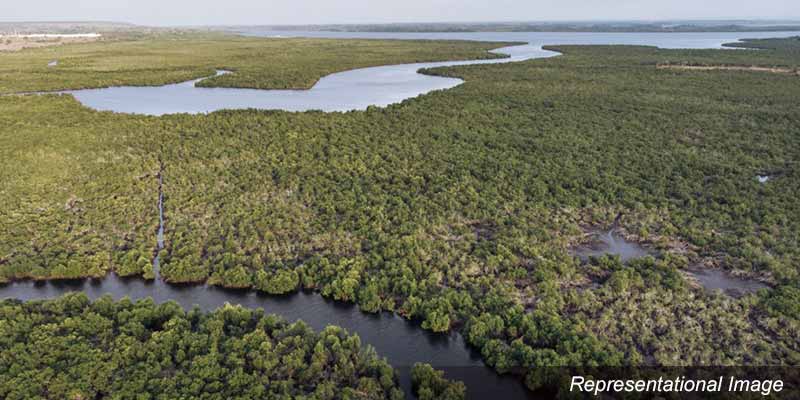- World
- Nov 04
UNEP releases report on climate adaptation funding gap
Progress on climate adaptation is slowing on all fronts when it should be accelerating to catch up with rising climate change impacts and risks, according to the Adaptation Gap Report 2023 by United Nations Environment Programme (UNEP).
What is adaptation and adaptation gap?
• Adaptation is the process of adjustment to actual or expected climate and its effects. In human systems, adaptation seeks to moderate or avoid harm or exploit beneficial opportunities. In some natural systems, human intervention may facilitate adjustment to expected climate and its effects.
• Adaptation gap is the difference between actually implemented adaptation and a societally set goal, determined largely by preferences related to tolerated climate change impacts and reflecting resource limitations and competing priorities.
• Current climate action is woefully inadequate to meet the temperature and adaptation goals of the Paris Agreement.
• While global average temperatures are already exceeding 1.1°C above pre-industrial levels, current plans reflected in the nationally determined contributions (NDCs) are putting us on a path towards 2.4°C–2.6°C by the end of the century.
• Even if the rise in temperature eventually slows as a result of more ambitious collective climate change mitigation efforts, climate risks will accelerate with every fraction of a degree because of the compounding and cascading nature of climate-related impacts.
Key points of the Adaptation Gap Report:
• Rich country promises of help for poorer ones to adapt to climate change have slowed despite more frequent extreme weather. The adaptation finance needs of developing countries are 10-18 times as big as international public finance flows – over 50 per cent higher than the previous range estimate.
• As a result of the growing adaptation finance needs and faltering flows, the current adaptation finance gap is now estimated to be $194-366 billion per year.
• At the same time, adaptation planning and implementation appear to be plateauing. This failure to adapt has massive implications for losses and damages, particularly for the most vulnerable.
• Estimated adaptation costs and needs for developing countries are significantly higher than previous estimates, with a plausible central range of $215 billion to US$387 billion per year this decade.
• Despite these needs, public multilateral and bilateral adaptation finance flows to developing countries declined by 15 per cent to $21 billion in 2021.
• As a result of the growing adaptation finance needs and faltering flows, the current adaptation finance gap is now estimated at $194-366 billion per year.
• At the same time, adaptation planning and implementation appear to be plateauing. This failure to adapt has massive implications for losses and damages, particularly for the most vulnerable.
• While five out of six countries have at least one national adaptation planning instrument, progress to reach full global coverage is slowing. And the number of adaptation actions supported through international climate funds has stagnated for the past decade.
Bridging the gap
This report identifies seven approaches to bridging the adaptation financing gap.
The core approaches continue to be dominated by increasing existing sources of adaptation finance, namely:
i) International adaptation finance.
ii) Domestic expenditure on adaptation.
iii) Private-sector finance for adaptation.
Around this core, four additional approaches for unlocking adaptation finance are identified.
iv) Remittances by migrants to their home countries which often contribute significantly to GDP.
v) Increasing finance tailored to small and medium-sized enterprises since they comprise the bulk of the private sector in many developing countries.
vi) Reform of the global financial architecture.
vii) Implementation of article 2.1(c) of the Paris Agreement on making finance flows consistent with a pathway towards low-carbon and climate-resilient development.
United Nations Environment Programme (UNEP)
• The United Nations Environment Programme (UNEP) is the leading global authority on the environment. It unites 193 Member States in an effort to find solutions to climate change, nature and biodiversity loss, and pollution and waste, collectively known as the triple planetary crisis.
• UNEP was founded in 1972. It was conceived to monitor the state of the environment and coordinate responses to the world’s greatest environmental challenges.
• UNEP is part of the UN Secretariat and responds to the UN General Assembly.
• Its headquarters is situated in Nairobi, Kenya.
• UNEP’s primary goal is to catalyze action on the environment and promote solutions to the triple planetary crisis of climate change, nature and biodiversity loss, and pollution and waste.
• Through scientific studies, policy support, inter-governmental coordination and public advocacy, UNEP helps humanity to foster climate stability, live in harmony with nature and forge a pollution-free future, in line with the 2030 Agenda for Sustainable Development.
• In the five decades since its founding, UNEP’s convening power, rigorous scientific research and public advocacy have helped to boldly advance the global environmental agenda. In particular, UNEP has led efforts to counter climate change, protect endangered species, end deforestation, repair the hole in the ozone layer and phase out toxic leaded fuels.
Manorama Yearbook app is now available on Google Play Store and iOS App Store

